November is Native American Heritage Month. The month is a time to celebrate rich and diverse cultures, traditions, and histories and to acknowledge the important contributions of Native people.
One way we can learn about indigenous peoples is through archaeology. Archaeology can help expand the Native American voice beyond what’s written in history textbooks and grow our respect for the people who came before us.
In 2005, archaeologists performed a Phase I identification-level survey on a parcel of land within Memorial Park owned by the Borough of Lemoyne in Cumberland County, Pennsylvania. Archaeological investigations were prompted by Norfolk Southern Railway Company’s interest in the construction of a connector rail line which required transferring 1.6 acres of park land.
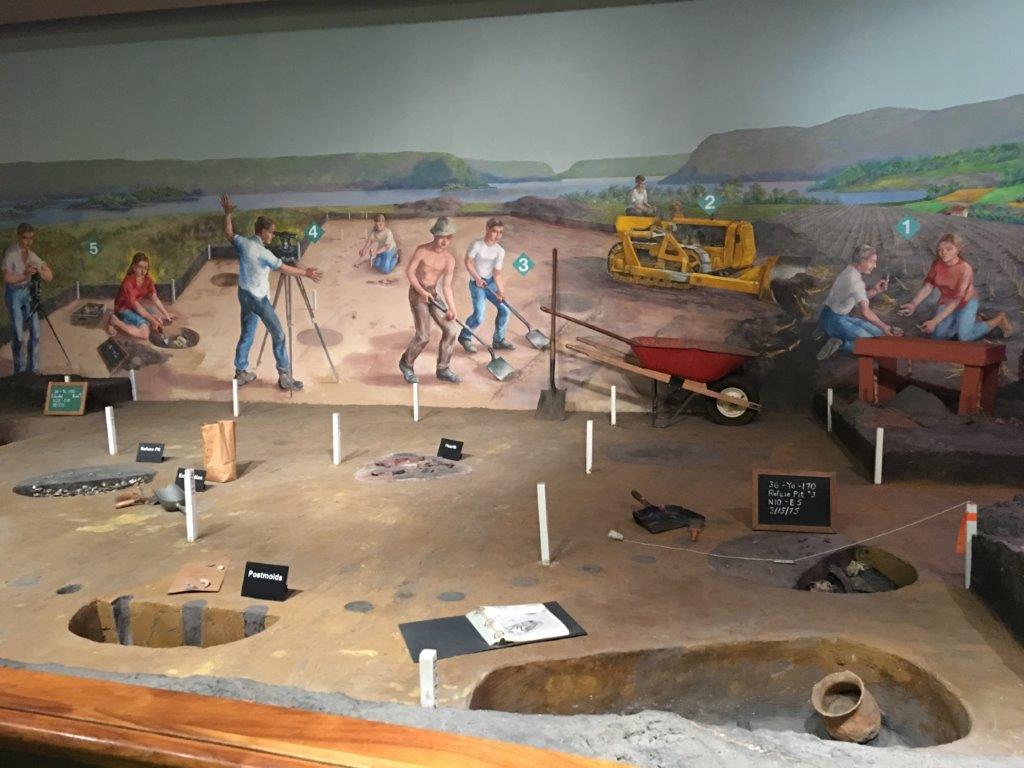
Norfolk Southern Railway Company sponsored the archaeological investigations and excavations revealed a Susquehannock village featuring a wooden palisade, a longhouse, and numerous food storage pits that were filled with around 100,000 artifacts dating from the first quarter of the seventeenth century A.D. The site also contained European-made artifacts.
One year from the date the ‘first shovel was in the ground’ the site was determined eligible for listing in the National Register of Historic Places (36CU0194: Lemoyne Borough Memorial Park, Resource #2005RE01565).
Many stories could be told about the Susquehannock village discovered in Lemoyne. One story involves a rail line connection project requiring compliance with Section 106 of the National Historic Preservation Act (which also happens to be a Section 106 consultation success story).
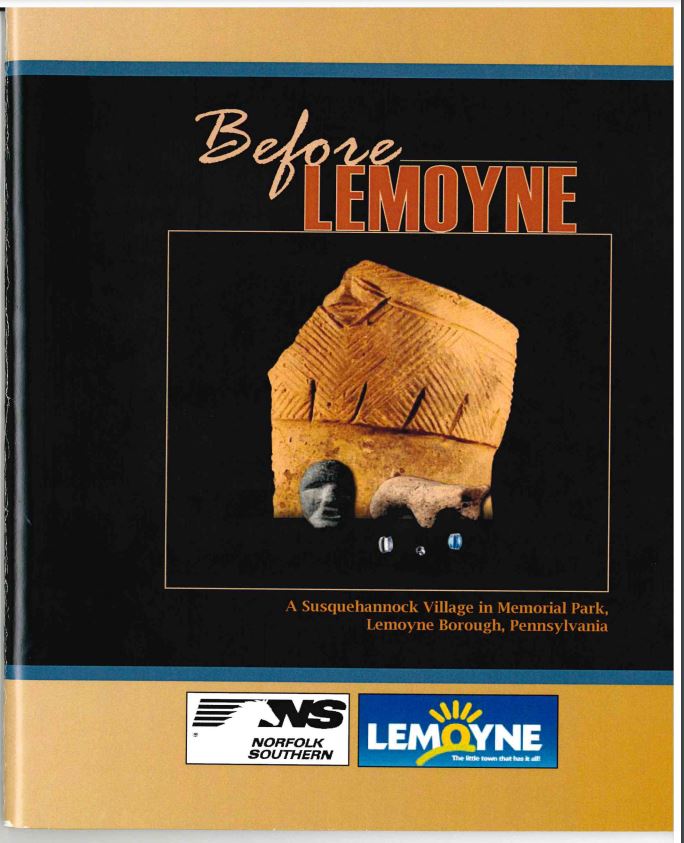
Another story is how the village’s discovery changed our understanding of the historical record concerning Susquehannock villages in the lower Susquehanna valley and of early interactions between Native American groups and Europeans in the Middle Atlantic region. A detailed discussion of the recoveries from the excavation can be found in Andrew Wyatt’s article, “Reconsidering Early Seventeenth Century A.D. Susquehannock Settlement Patterns: Excavation and Analysis of the Lemoyne Site, Cumberland County, Pennsylvania,” in the 2012 edition of Archaeology of Eastern North America.
I’d like to uncover the story of how this discovery impacted the citizens living in Lemoyne today which led to the nomination and recent dedication of a historical marker for the Susquehannock Village at Lemoyne.
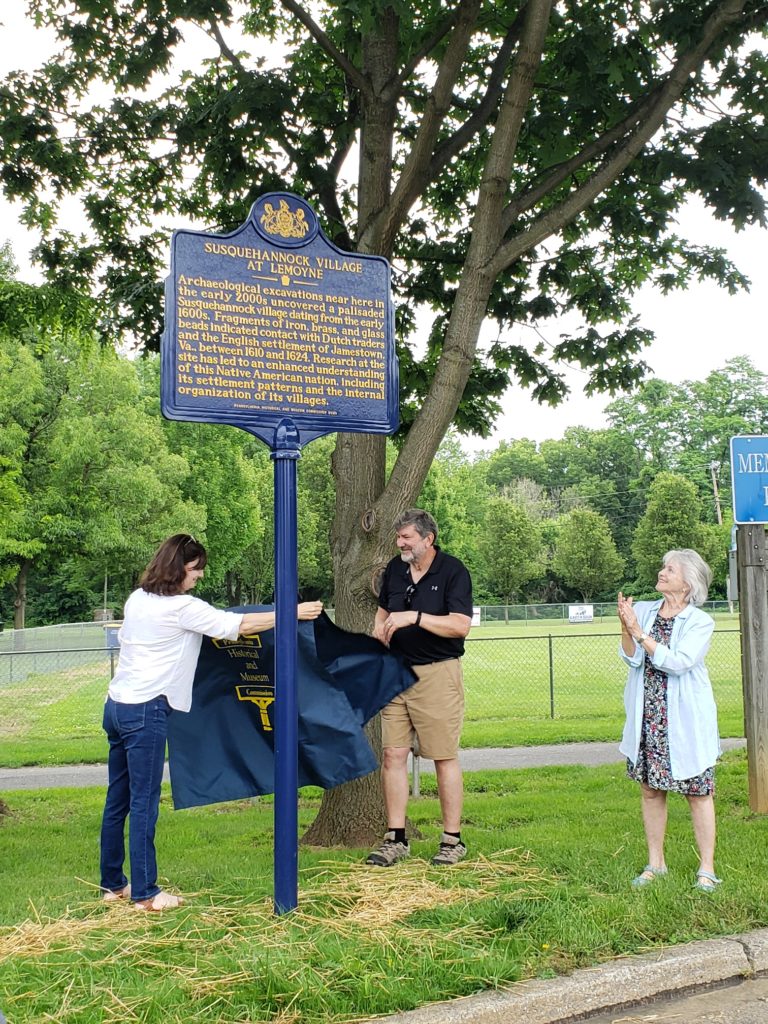
A current Lemoyne Borough Council Member, Sue Yenchko, has been the driving force behind recognizing the significance of Lemoyne’s Susquehannock village. She wasn’t on borough council when the archaeological excavation was happening, but she’s been an active Lemoyne resident for over 27 years. I asked her if she would recollect what she learned from past council members at the time of the dig and how those actions influenced her desire to mark the site and further tell this story of the Susquehannock people.
Andrea: When Norfolk Southern initially approached Lemoyne about the connector line project, did the borough’s leadership envision of this type of outcome could be a possibility?
Sue: In speaking with a former borough council member who grew up in Lemoyne and who was on council at that time, she indicated the borough didn’t have a clue that anything had ever been at that location. Lemoyne understood that because government funds helped pay for the development of Memorial Park, Norfolk Southern had to comply with federal laws to undertake the project. Norfolk Southern also didn’t think the project would uncover anything.
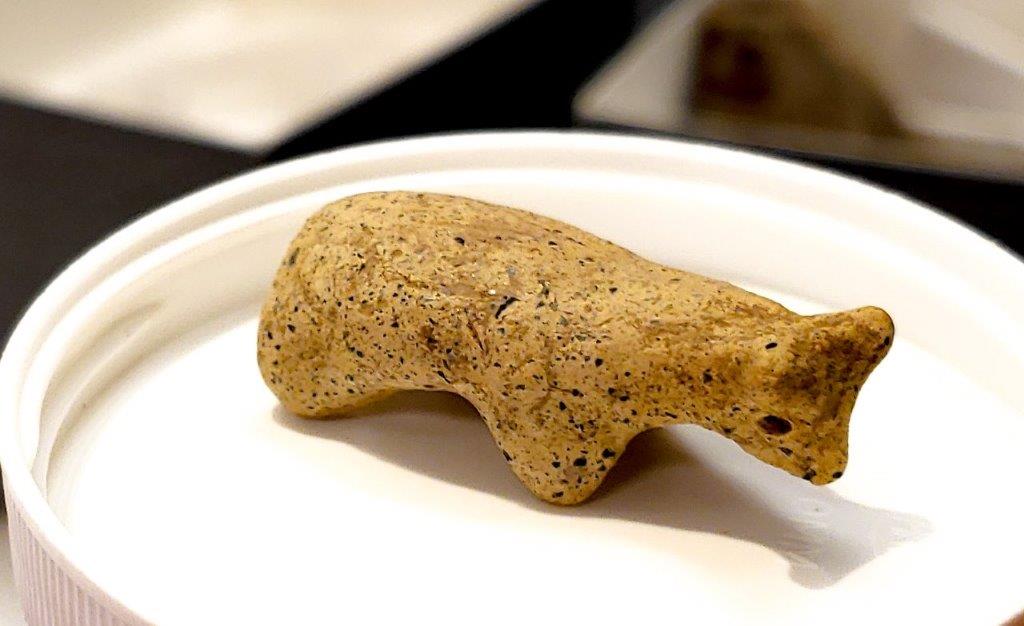
Andrea: At what point during the archaeological investigation did the borough realize that Memorial Park held information about a significant 17th century society?
Sue: Borough leadership heard from Norfolk Southern that some things had been found, and the project might get a bit more complicated than originally expected. But later, borough leadership remembered stories about Native Americans in the area that were more like folklore, although those tales weren’t given much credence over the years. There were lots of stories kids would tell/make up about Lemoyne long ago! The discoveries revealed by the dig were beginning to confirm those stories.
Andrea: How did the community react to the knowledge that the Susquehannock people were some of the earliest residents in what is now the Borough of Lemoyne?
Sue: There was no reaction at all that was communicated to council. Probably because people didn’t go to borough council meetings. There may have been a lack of interest because people didn’t know about the archaeological dig happening in the park. I think there is more sensitivity now to these issues concerning Native Americans. When I first heard about it, I was thrilled to learn that people lived here before there was a Lemoyne as I am experiencing it!
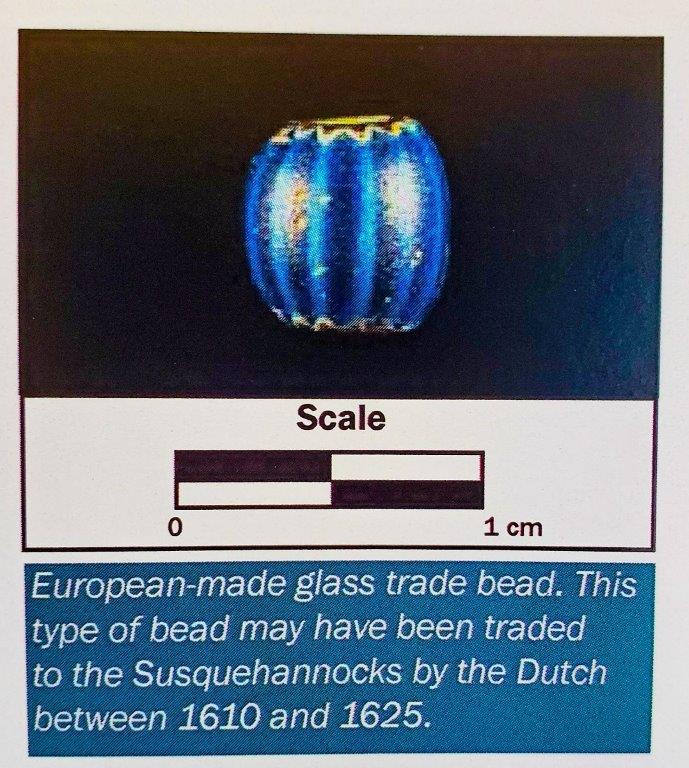
Andrea: What part of the process, from discovery to excavation to analysis, was the most meaningful to the borough, and why?
Sue: First, the borough was initially concerned that Memorial Park was being dug up. The archaeologists were working near the heavily-used baseball field. Second, Andrew Wyatt, the archaeologist who was managing the dig, communicated to borough leadership about the significance of site. His briefings to council started to get everyone talking.
Andrea: What prompted the nomination to the PHMC’s Historical Marker Program?
Sue: In borough hall, hanging on the wall, was a framed photographic mural of the dig. I didn’t know when or how that got produced, but I was always curious about it and how it showed the parameters of the dig and included some photographs. I looked at that with some interest every time I entered the building and started attending council meetings beginning in 2006. Every year, the mural, or poster got more and more faded to the point where you could hardly see the image.
When I was elected to council four years ago, I wanted to get the image recreated because I wanted more people to see it. I noticed the logo along the bottom of the mural, so I reached out to the company that produced it. After a couple of months, I received an email saying that they found the file! I was thrilled. So, I took it to a store and asked them to reproduce the photographic mural.
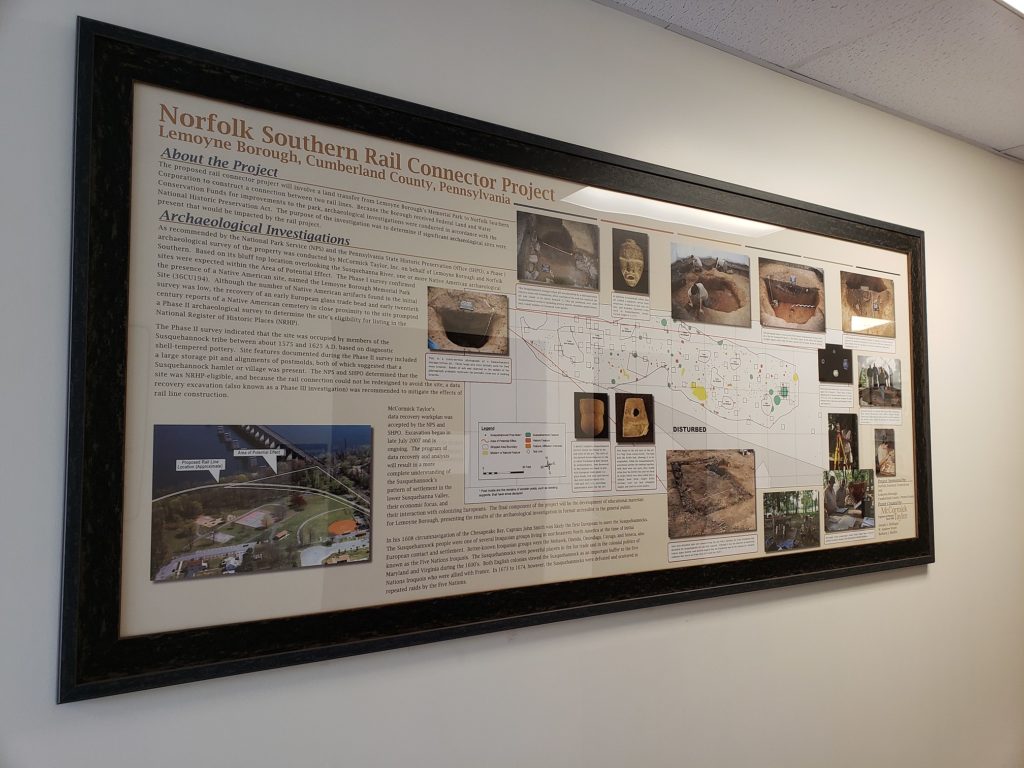
Andrea: What would you like to share with other municipalities who may have the opportunity to conduct an archaeological investigation in their communities?
Sue: I would tell them to publicize it more. I was just a Lemoyne citizen at that time, and I vaguely remember the plans for Norfolk Southern’s project, but the borough didn’t make a big thing of it. — But I think it is a big thing! We discovered people who were here 100s of years ago. And I’d tell them to keep tabs on the progress and to stay informed. If other municipalities have this opportunity, they should stay involved and see what they could learn. It’s so important to know what we have so we can leave it to future generations … because the past is important.
Andrea: Is the borough planning any further interpretation of the Susquehannock village in Lemoyne?
Sue: Yes! The topic will be on a future agenda of the borough’s Community Development / Parks & Recreation Committee. I’d like to request a loan of some of the artifacts from The State Museum to have on display at borough hall.
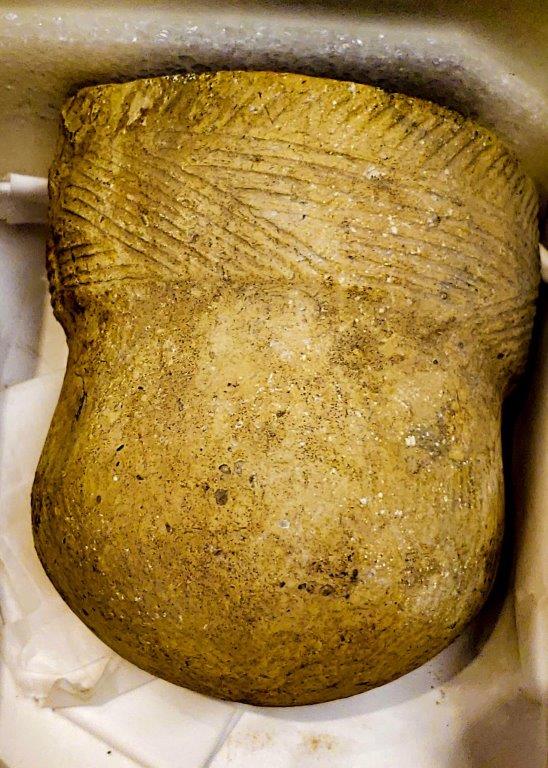
And we are also toying with the idea to make the Susquehannock Village a theme of Memorial Park. We haven’t figured out yet how to do this, but we might put up displays of what a longhouse looked like, or more information to help further tell the story of the Susquehannocks beyond the historical marker. Perhaps we’ll install a standing galley sign like those on Market Street that explain the purpose of the rain gardens. This is not the end. We certainly want to expound on what was found there.
The Susquehannock Village at Lemoyne historical marker was dedicated on Sunday, June 13, 2021.
Other online resources & news of the marker dedication:
https://mobile.twitter.com/asiaontv/status/1404152536584572929
https://www.jstor.org/stable/23265136
https://www.mccormicktaylor.com/blog/historical-marker-unveiled-by-lemoyne-borough
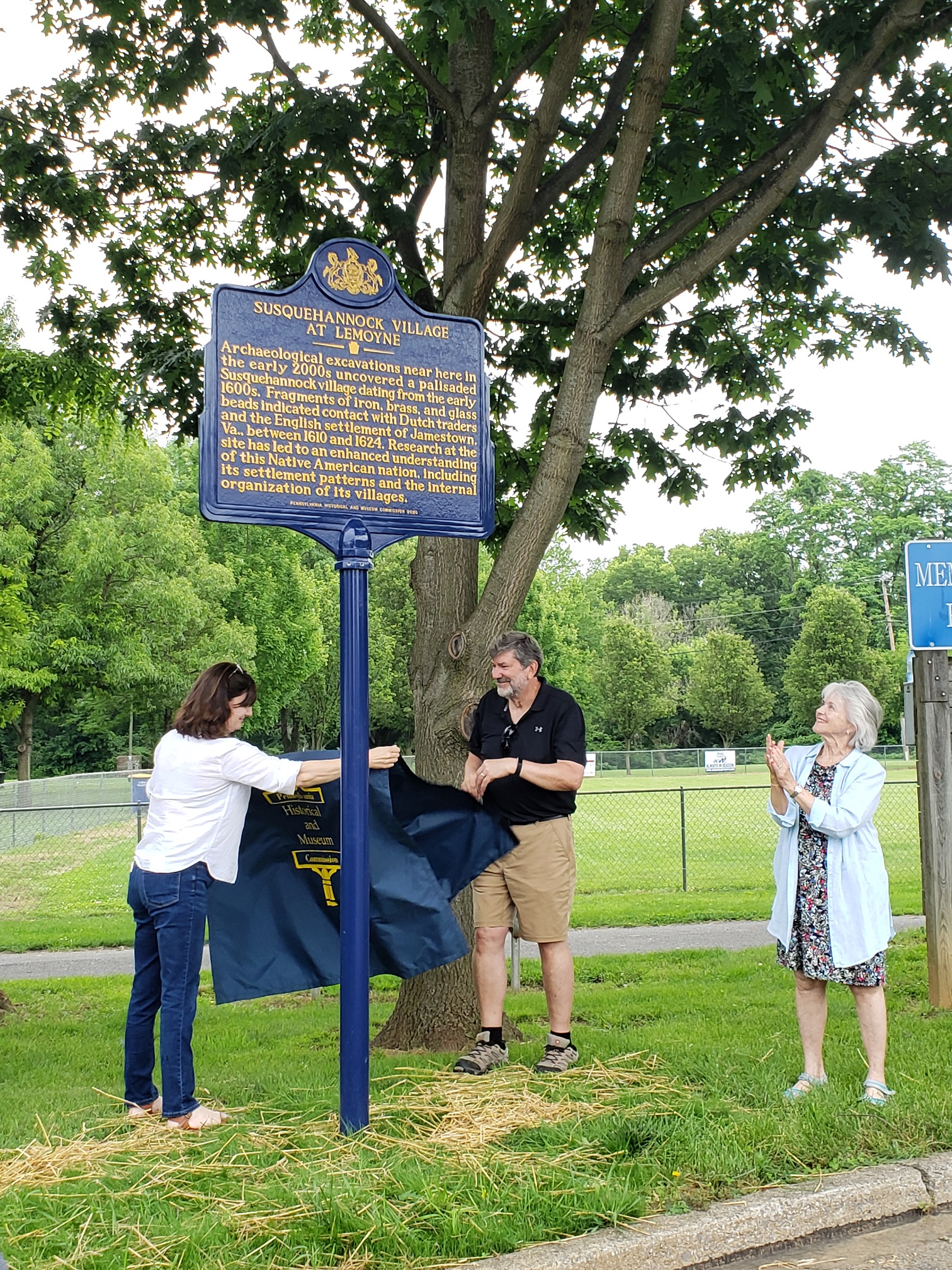
Excellent
Kudos to all involved at seeing a positive direction taken with such a significant find. And nice to see a collarborative approach involving a corporate member as well, a rare instance. Thanks for all your efforts and for providing a model for how this should be done. CLT. SI, NMAI.
Where was/is the Susquehannock’s burial grounds? Would it not have been on the highest ground in the area… like
between Cumberland Road and Summit Street?
Thank you for your question. Based on other Susquehannock sites (Washington Borough, being one) palisaded village sites, like the Lemoyne site, were surrounded by cemeteries, but no cemetery was located at the Lemoyne site.
Thank you for your response, Andrea. Perhaps of further interest would be some possible stone artifacts that I found this past summer while work was being done on a deeply buried pipe on our pool. I sent a photo of these items to the Harrisburg museum but never heard back from them. I tried to paste them in this comment section but to no avail.
I know this story is now several years old, but is there a current status update? Has Norfolk Southern withdrawn their interest in the project or is there a potential work around being discussed?
Hi, David. Thank you for your question. The project is ongoing. The Pennsylvania State Historic Preservation Office continues to consult with Norfolk Southern and PennDOT on any potential impacts to this archaeological site.